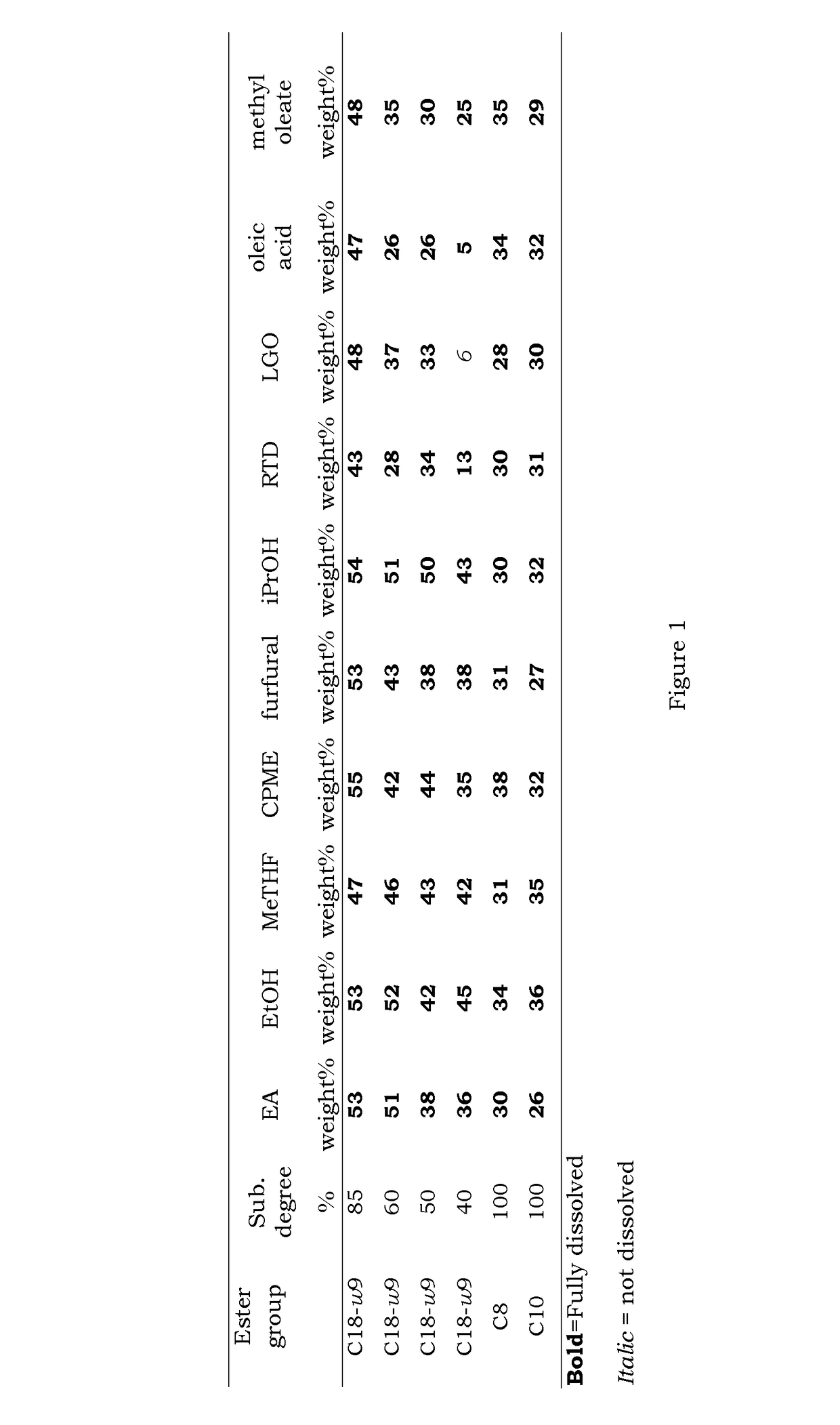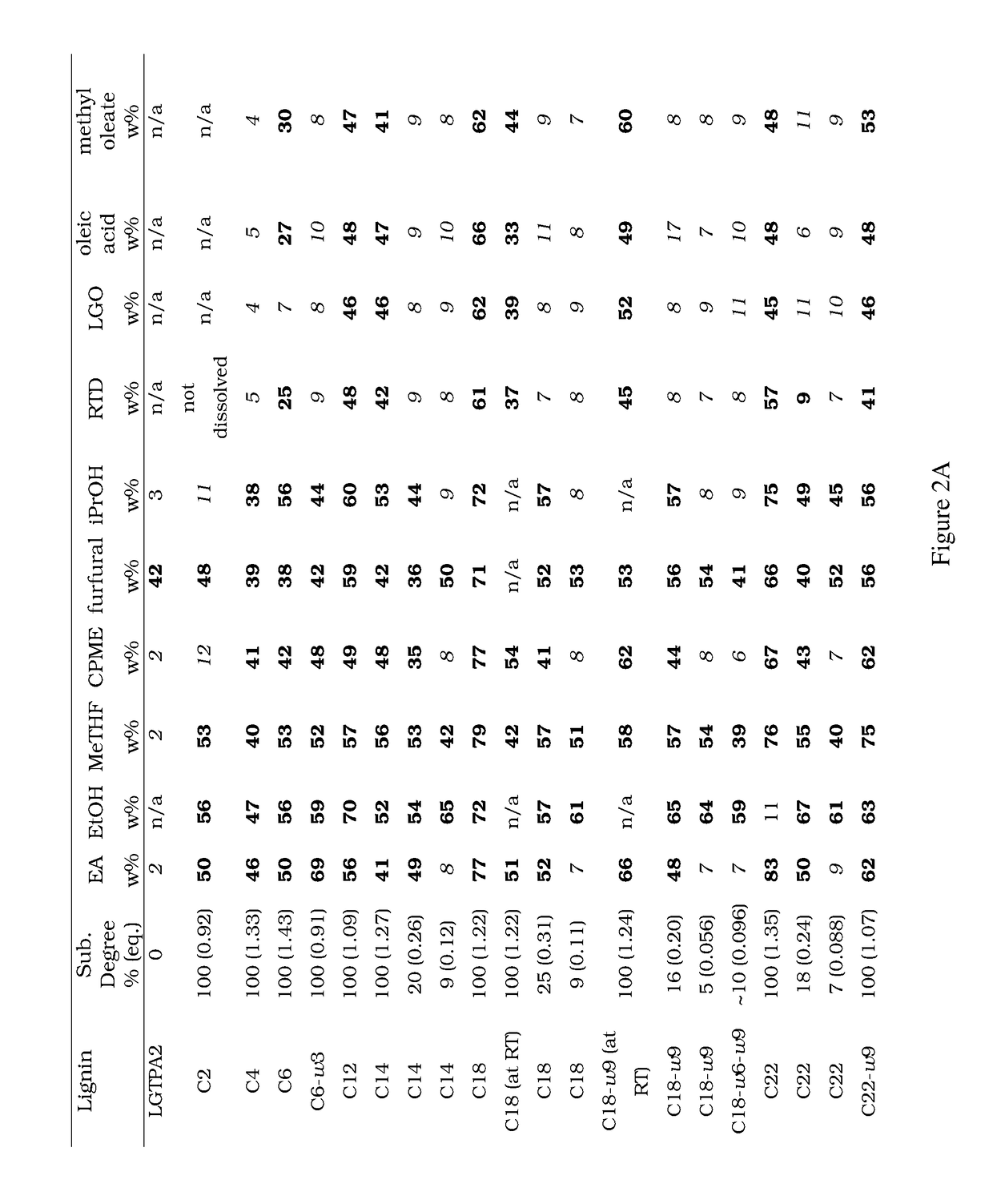Composition comprising esters of lignin and oil or fatty acids
a technology of lignin and esters, which is applied in the direction of lignin derivatives, fatty acid chemical modification, fuels, etc., can solve the problems of lignin dispersibility, food vs fuel debate, lignin or lignin supply, etc., and achieves the dissolution of lignin or lignin derivatives, reducing substrates, and increasing the amount of lignin
- Summary
- Abstract
- Description
- Claims
- Application Information
AI Technical Summary
Benefits of technology
Problems solved by technology
Method used
Image
Examples
example 1
[0090]To a solution of ethyl acetate (0.1044 g) Lignin type A2-Ac-ester (0.1046 g) was added. The suspension was stirred under heating (70° C.). A pourable solution at 70° C. comprising 50 weight % of Lignin type A2-Ac-ester was attained.
example 2
[0091]To a solution of ethanol (0.0858 g) Lignin type A2-Ac-ester (0.1086 g) was added. The suspension was stirred under heating (70° C.). A pourable solution at 70° C. comprising 56 weight % of Lignin type A2-Ac-ester was attained.
example 3
[0092]To a solution of acetone (0.0592 g) Lignin type A2-Ac-ester (0.1012 g) was added. The suspension was stirred under heating (70° C.). A pourable solution at 70° C. comprising 63 weight % of Lignin type A2-Ac-ester was attained.
PUM
| Property | Measurement | Unit |
|---|---|---|
| wt % | aaaaa | aaaaa |
| wt % | aaaaa | aaaaa |
| wt % | aaaaa | aaaaa |
Abstract
Description
Claims
Application Information
 Login to view more
Login to view more - R&D Engineer
- R&D Manager
- IP Professional
- Industry Leading Data Capabilities
- Powerful AI technology
- Patent DNA Extraction
Browse by: Latest US Patents, China's latest patents, Technical Efficacy Thesaurus, Application Domain, Technology Topic.
© 2024 PatSnap. All rights reserved.Legal|Privacy policy|Modern Slavery Act Transparency Statement|Sitemap



